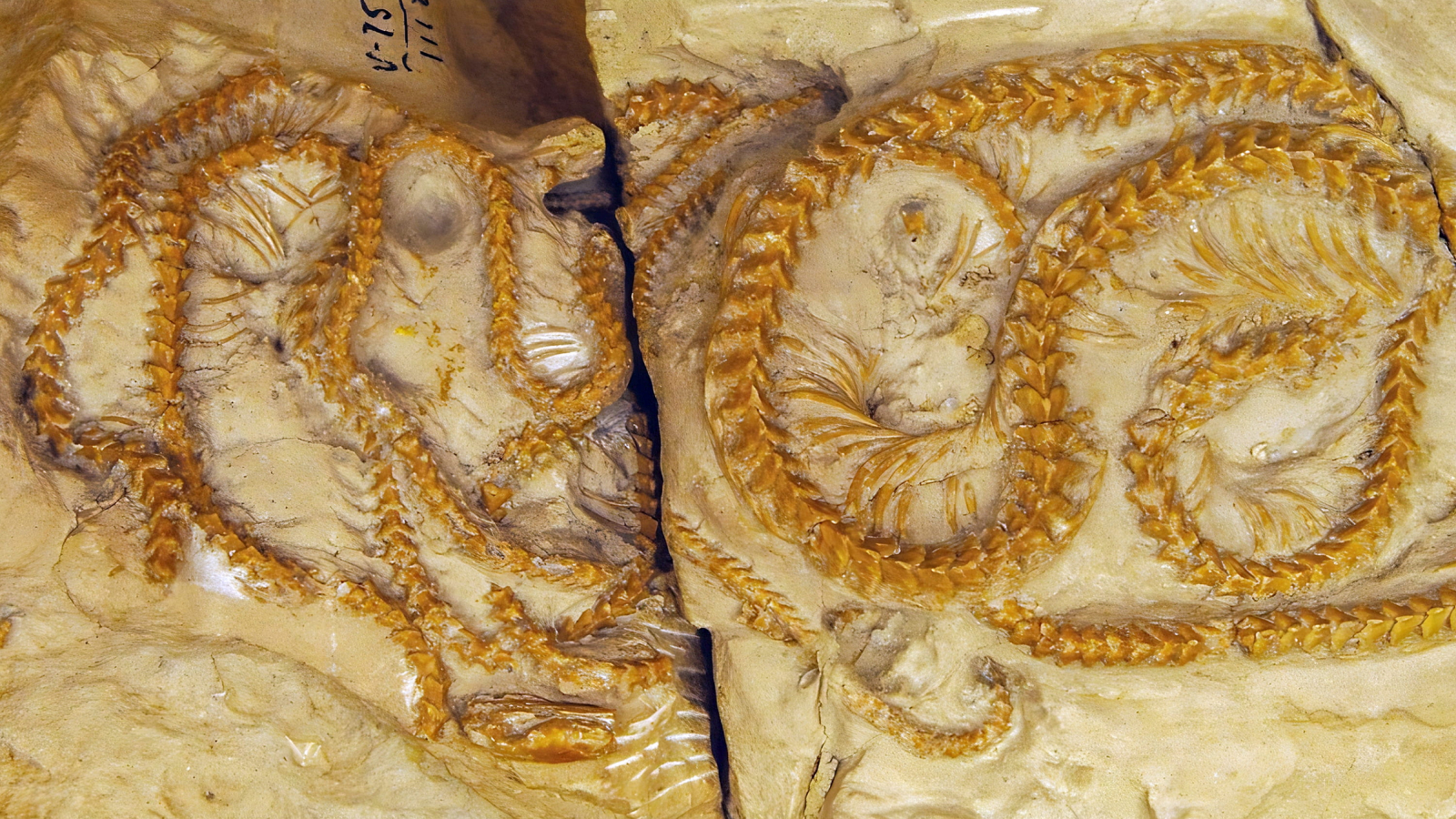
About 38 million years ago, three snakes died while huddled together in what is now Wyoming. For decades, the identity of the fossils has been a mystery. Now, researchers have revealed the snakes are a newly identified species.
The fossils were discovered in the White River Formation in 1976, and researchers first described the snakes' clustering behavior in a 1986 study. The snakes may have been clustering for warmth and protection over winter, before being preserved in what became the first clear evidence of reptile social behavior in the fossil record, according to a statement from the University of Alberta. The fossils suggest these snakes may have been hibernating in groups like modern-day garter snakes (Thamnophis) do.
In a new study, published June 19 in the Zoological Journal of the Linnean Society, scientists used high-resolution CT scans to examine the fossils in more detail.
The team concluded that the snakes are related to modern-day boas and belong to a newly described species, which they called Hibernophis breithaupti. Hibernophis combines the Latin word "hibernare," meaning "to pass winter," with the Greek word "ophis," meaning "serpent." The name is a nod to the snakes' unusual social behavior.
Related: 50-foot 'king of the serpents' may have been the biggest snake to ever live
"This is really unusual for reptiles," study co-author Michael Caldwell, a vertebrate paleontologist and evolutionary biologist at the University of Alberta, said in the statement. "Of the almost 15,000 different kinds of reptile species alive today, none of them hibernate in the way that garter snakes do."
Garter snakes, which range across North America, congregate in communal dens between October and April, sometimes traveling long distances to reach one another, according to the National Park Service. By hibernating in clusters, the snakes stay warm when the temperature drops.
"They can't regulate their body temperature so they need to find a way to conserve as much heat as they can through the winter and they do this by forming these big masses," Caldwell said.
H. breithaupti may have gathered for the same reason, with the fossils capturing a snapshot of this social behavior just as the animals died. The researchers suspect the snakes were caught in a small flood while they were in their winter den, so they were trapped and quickly became encased in a fine sandy mudstone, according to the statement.
The process not only kept the animals together in a group but also preserved complete, articulated skeletons. This is particularly rare for snakes because they are made up of hundreds of vertebrae, which are easily scattered.
"There are probably, in the world's museum collections, nearly a million disarticulated snake vertebrae," Caldwell said. "They are easy to find. But finding the whole snake? That's rare."







